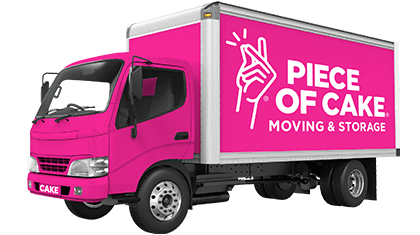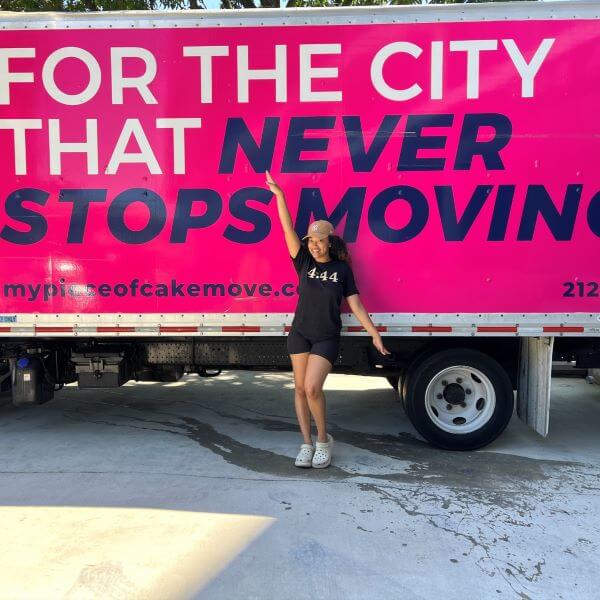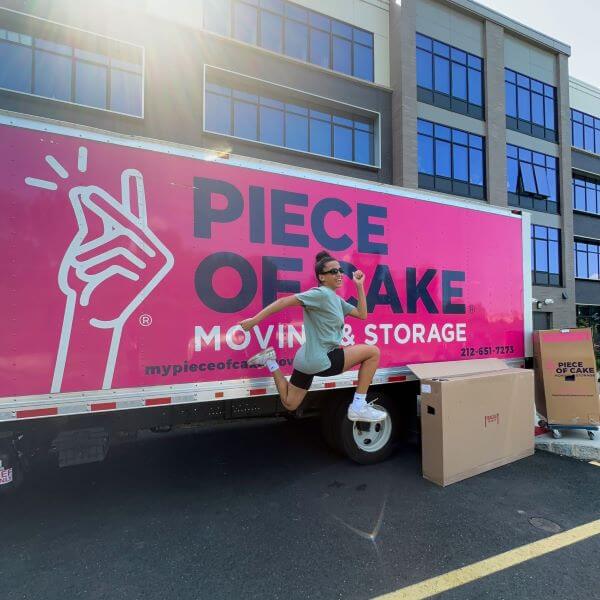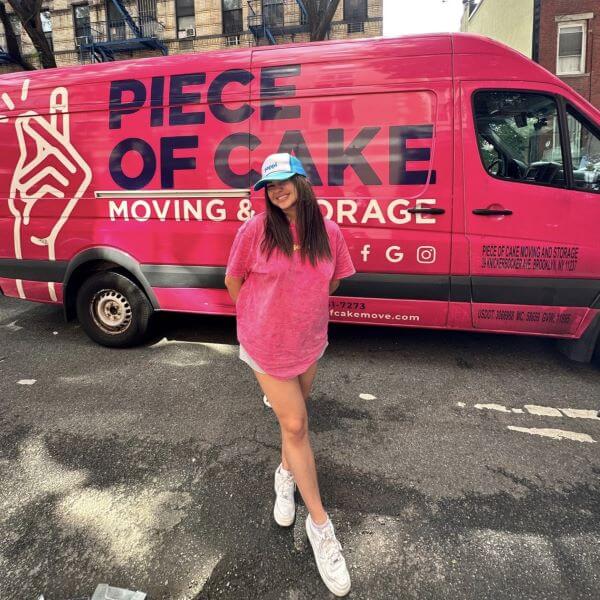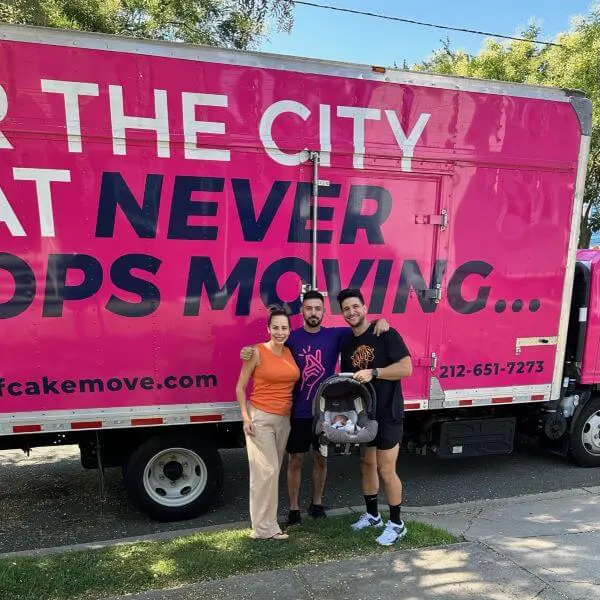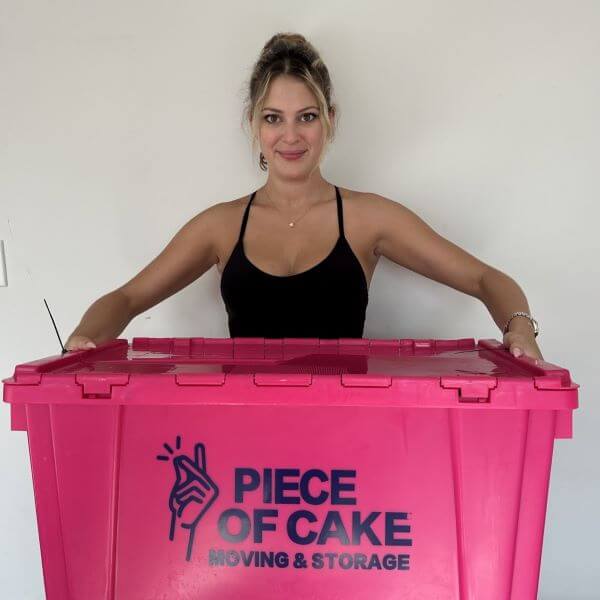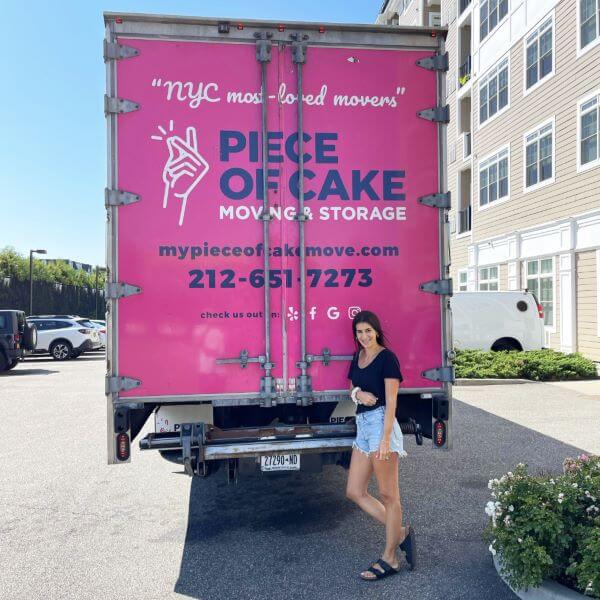9 Tips for Moving to a Building with no Elevator

You’ve found the perfect apartment. The rent is right, the neighborhood feels like home, and the view is more than you can ask for. There’s just one tiny problem—no elevator. Moving into a building with no elevator might sound daunting, but don’t worry, we at Piece of Cake Moving & Storage have your back with these top expert tips that can make or break your move with no elevator, especially if you’re considering a DIY move.
1. Plan like a pro to move into a building with no elevator
A solid plan can save you from a world of pain—literally. Take some time to map out the move. Trust us, there’s nothing worse than getting your couch stuck halfway up the stairs.
- Measure your furniture: Make a list of all the large items you’ll be moving. Measure their dimensions, including height, width, and depth. Don’t forget to measure any detachable parts as well.
- Measure doorways and stairwells: Head over to your new place with measuring tape. Measure the width and height of doorways, the width of hallways, and the dimensions of the stairwells, including any landings or turns.
- Compare measurements: Ensure that your furniture can fit through all these spaces. If anything seems too tight, try disassembling it if possible. For example, taking the legs off a table or bed frame can make all the difference.
- Disassemble large furniture: Taking apart large furniture pieces can make moving them much easier and help prevent damage. When you disassemble furniture, be sure to label all the hardware and parts clearly. Place screws and small pieces in Ziplock bags to keep everything organized and labeled.
- Plan the path: Visualize the path each item will take from the moving truck to its final destination, including the estimated distance from loading or parking zones. Take note of any tight corners, low ceilings, light fixtures, or other protruding elements that may cause maneuvering challenges, as you want to make sure not to cause property damage as well.
2. Pack smart for a move without an elevator
Packing smartly is essential when you’re moving to a building without an elevator. The goal is to make carrying boxes up multiple flights of stairs as easy as possible.
- Use smaller-sized boxes: When packing, think small and manageable. Instead of one giant box that weighs a ton, go for smaller boxes that you can easily carry up the stairs. Smaller boxes are lighter and easier to handle, which is crucial when navigating tight stairwells. Overloading large boxes increases the risk of back injuries and makes the boxes prone to breaking. Smaller boxes also allow for better weight distribution.
- Distribute weight evenly: Distributing weight evenly is equally important. When packing each box, try to distribute the weight evenly. Place heavier items like books or cookware at the bottom of the box and fill the top with lighter items like pillows or clothing to balance the weight. Even if the box isn’t full, resist the temptation to overpack. It’s better to have more manageable boxes than a few overly heavy ones.
- Pack room by room: Label each box with its contents and the room it belongs in. This way, you won’t end up with your kitchen utensils in the bedroom. Start by packing items you don’t use every day, such as books, seasonal clothing, and decorations. Use a permanent marker to write the contents and room label on each box. Consider using colored tape or stickers to easily identify boxes by room, which can speed up the unpacking process and make it easier to quickly identify boxes by room or function.
- Protect fragile Items: Moving up stairs can be bumpy. Protect breakables to ensure they arrive intact. Wrap fragile items in bubble wrap, packing paper, or even towels and clothing for extra padding. Clearly label boxes containing fragile items to alert anyone helping you to handle these boxes with extra care. Make sure there’s no empty space inside the box where fragile items can shift during the move. Use packing peanuts, crumpled paper, or even toilet paper or paper towels to fill any gaps.
- Create an essentials box: Prepare a box of essentials that you’ll need immediately the first night and when you arrive. Include things like electronics (laptop, chargers) and toiletries (toothbrush, toothpaste, toilet paper, towel, soap) and a change of clothes. Consider a set of cutlery or disposable dinnerware for your first meal or two.
3. Enlist help for your move with no elevator
We can’t stress this enough—don’t try to go it alone. Moving into a building without an elevator is a team effort.
- Ask multiple friends and family to help: Their support can make all the difference between an overwhelming two-person task into a more manageable team effort that can go much smoother and quicker as a group.
- Organizing your team of helpers: Make sure to give clear instructions and tasks so everyone knows what they’re doing for a quick efficient move. Think of assigning certain people to smaller boxes and allocating the heavy lifting of furniture to those who can easily manage the weight.
- Communicate the plan: Explain the plan and point out any tight spots that might be challenging, like hanging light fixtures or wall sconces to watch out for. Designate specific tasks or areas to each person to avoid confusion and ensure efficiency.
- Refreshments and breaks: It’s also essential to keep everyone well-hydrated and take breaks. Moving is hard work, especially when you’re helping someone move into a building with no elevator. Being considerate and prepared with cold drinks stocked in your new place, as well as bottled waters at your moving location can go a long way in keeping your team hydrated and happy, especially on hot days.
4. Move during low traffic times for no elevator buildings
If possible, try to move during off-peak quieter hours, like in the middle of work hours on a weekday. Fewer people means more room on the stairs for your stuff when moving into a building with no elevator. With less people around, there will be less foot traffic in the hallways and stairwells, which will make it easier to navigate large items without blocking common areas. The last thing you want during a move is the added stress of blocking neighbors or feeling like you’re in the way. Midweek days are typically quieter times in residential buildings and can help make the moving process less stressful and more peaceful.

5. Protect your stuff (and your back) for moving with no elevator
Moving heavy items up several flights of stairs is no joke. Start with the heaviest and most cumbersome items first when you and your helpers have the most energy. Make sure to use proper lifting techniques to avoid injuries. Bend at the knees, not the waist, and keep the load close to your body. If something’s too heavy, get help or use equipment like a dolly. If you’re undertaking a DIY move, it’s especially important to make your move easier and safer.
These are the essential moving equipment items we recommend that you can easily order off Amazon or similar online retailers for under $100:
- Moving dollies: A moving dolly is a lifesaver when it comes to transporting heavy items. For around $30-$50, you can get a sturdy, four-wheel dolly that can handle most of your heavy lifting. Look for options with a high weight capacity and a non-slip surface. Plus, a dolly isn’t just for moving day—it can double as a handy tool for dealing with those heavy packages you get from online purchases. There are some great foldable and compact dollies available nowadays, which makes it easy to tuck it away in a closet or store it under a bed.
- Furniture sliders: Furniture sliders are perfect for moving bulky items across floors without damaging them. They’re super affordable, usually around $10-$20 for a pack. Just place them under the legs of your furniture, and you can slide heavy items with ease.
- Hand truck and stair rollers: If you have a lot of heavy boxes, a hand truck can be a real game-changer. They can be a bit pricier, but you can find basic models for around $70-$90. They’re especially useful for transporting stacks of boxes or appliances. Stair rollers can also be incredibly helpful for getting heavy items up and down stairs with less effort and more ease. These moving devices are designed to glide smoothly over stair edges to make the process less strenuous.
- Moving straps: Moving straps, also known as lifting straps, can help you and a partner lift heavy items more ergonomically. They distribute the weight more evenly and reduce the strain on your back. A good pair of moving straps can be found for about $20-$30.
- Stretch wrap: Stretch wrap for moving is great to secure furniture, bundle items together, and protect your belongings from scufs and scratches. Think Saran Wrap, but for furniture. A large roll of stretch wrap costs about $15-$20 and is well worth the buy.
- Work gloves: Protect your hands with a good pair of work gloves. They provide better grip and keep boxes and furniture from slipping out of your hands, especially when they start to get sweaty. It also protects your hands from cuts and blisters. A quality pair of gloves costs about $10-$15.
By investing in these affordable items, you can make your DIY move much smoother and safer. Not only will you protect your belongings, but you’ll also save your body from unnecessary strain.
6. Communicate with building management
Remember to give your building management a heads-up about your move. They might let you use service entrances or other handy facilities to make things easier. And if they allow it, stair rollers can be a game-changer for getting heavy stuff up and down the stairs, as not all property managers may allow them.
7. Secure convenient parking for your move
Parking can be a real headache in busy city areas. Try to secure parking spots as close by as possible. The shorter the distances you have to lug your things to and from the moving truck, the better!
8. The final touches of moving into a building without an elevator
Once everything is in, give yourself a pat on the back—you did it! Now it’s time to sit back, relax, and enjoy your new space after a long day of moving. Celebrate by treating yourself to a nearby restaurant in your neighborhood, getting takeout, or ordering in. Whichever you decide, treating yourself and your friends is a great way to thank them for their help and hard work while enjoying each other’s company.
Plug in your TV or monitor and create a cozy atmosphere to relax over your favorite streaming show or play some tunes to help decompress from the day’s work. By enjoying some well-earned relaxation at the end of it all, you can turn the sometimes hectic moving chaos into an enjoyable bonding experience to remember and kick-off your next chapter in your new home. You’ve earned it!
9. Or call in the pros for moving in a building with no elevator
If all this sounds like too much work, remember that Piece of Cake Moving & Storage is here to make your move as smooth as possible. Whether you’re moving into a fifth-floor walk-up or a ground-floor studio, we’ve got the expertise to handle it all.
Our professional movers are experienced with the challenges of moving into a building with no elevator. We also offer full packing and white glove moving services to ensure your belongings are protected and handled with the utmost care, especially for a move with no elevator.
Give us a call or reach out for an instant quote and we’ll tackle all the stairs so you don’t have to, for a truly piece of cake move!
Ready to make a move? Get in touch today for an obligation-free guaranteed flat price moving quote.
Related articles
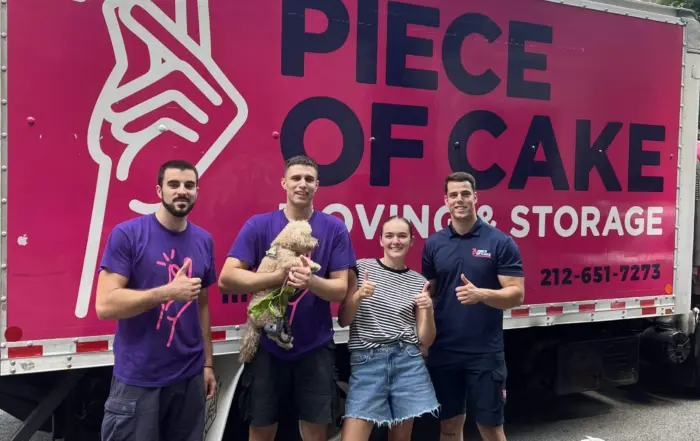
Average Moving Cost in Connecticut: Factors that Affect Moving Prices
Learn More
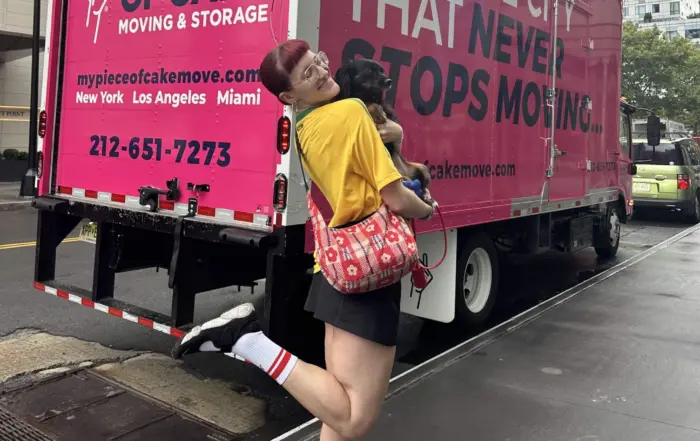
9 Tips for Moving to a Building with no Elevator
Learn More
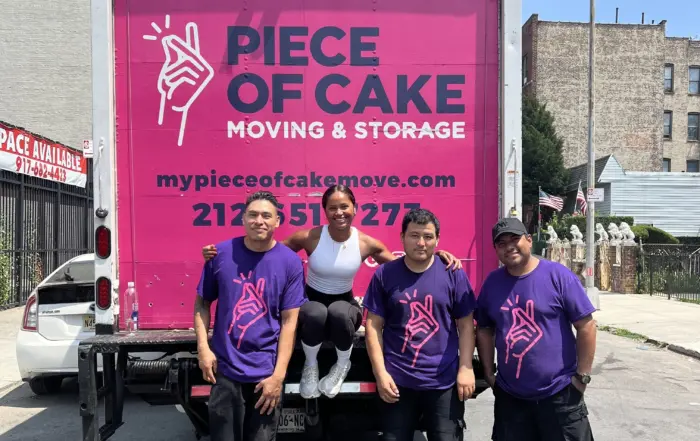
How to Get Rid of a Couch in 8 Easy Ways
Learn More
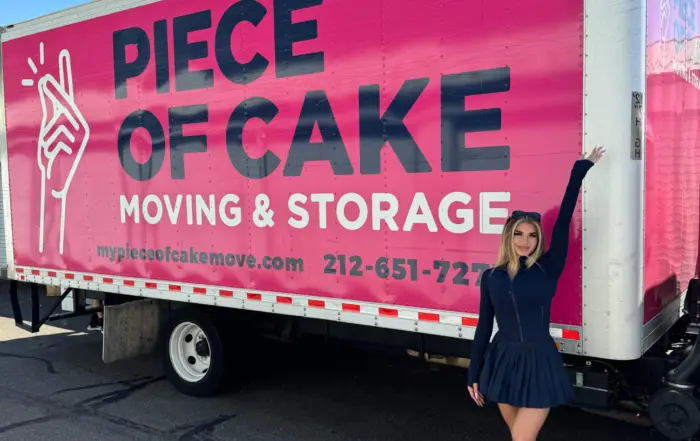
Average Moving Costs in NJ: Factors that Affect Moving Prices
Learn More
